A successful podcast begins with a solid plan. In this class, we’ll break down the essential steps to create a focused and effective podcasting strategy. We’ll cover:
- Find Your Big Idea: Discover the driving force behind your podcast.
- Identify Your Target Audience: Understand who you’re speaking to and how to serve them.
- Decide on Your Podcast’s Form: Choose the format that best presents your message.
Get ready to brainstorm! Grab a pen and paper… it’s time to start outlining your podcast’s vision.
1. Find your “Big” idea
Your “Big Idea” is the foundation of a successful podcast. It directs your creative energy and gives your podcast meaning and purpose. Think of it like a magnifying glass focusing the sun’s rays – when you harness your passion and ideas into a single, powerful beam, you ignite your potential and create something truly impactful.This is partly because it helps you to direct your creative energies. I found this illustration in Eric’s book, “Making Noise”. It serves as a perfect illustration of this point.

He said,
“In each circle, the same amount of energy is expended. On the left, it goes off in numerous directions. On the right, all the energy is harnessed in one direction and, as you can see, goes so much farther. Vision works the same way.”
Pg 68, Eric Nuzum. “Make Noise.”
With that in mind, here are practical steps to uncovering your “Big Idea”:
- Identify Your Passion: Think about what excites you, what you could talk about for hours without getting bored. Your passion often serves as a great starting point for your ‘Big’ idea.
- Consider Your Expertise: What are you good at? What topics do you have a deep understanding of or experience in? This could be anything from theology, counselling, leadership, to personal development or community building.
- Research Existing Podcasts: Look at popular podcasts in your area of interest. Identify what they’re doing and how you can offer something different or better.
- Define Your Unique Perspective: What unique insights or experiences can you bring to the table? Your unique perspective can make your podcast stand out.
- Consider Your Audience: Who are you trying to reach? What topics would they be interested in? What problems do they have that you could address?
- Condense Your Idea: Once you’ve gathered all this information, try to summarize it into a concise statement of no more than 10 words. This statement will serve as the guiding principle for your podcast.
Example: if your podcast is about providing guidance to youth pastors, your ‘Big’ idea could be “Equipping youth pastors for dynamic, Spirit-led youth ministry”.
Remember, your ‘Big’ idea should be engaging and reflective of the content you’ll provide in your podcast. It’s the first step in creating a podcast that resonates with your audience and stands out in the crowded podcasting landscape.
2. Identifying your target audience
Now that you have your Big Idea, it’s time to define who you want to reach. Understanding your target audience will dramatically shape your content and approach, ensuring your podcast resonates with the people you intend to serve.
Eric Nuzum, in his book “Make Noise,” offers a powerful framework for this. He proposes four essential questions:
- YOU: Who are you? Your identity, passions, and experiences influence your podcast’s tone and perspective.
- THEM: Who are you speaking to? Be specific! Define their interests, needs, and the challenges they face.
- WHAT: What do you have to say? What messages and themes align with your Big Idea and your target audience’s needs?
- WHY: What impact do you want to have? How do you want to influence your listeners’ thinking and actions?

Nuzum emphasizes putting “THEM” (your audience) first. This fosters empathy and ensures your podcast truly connects with their needs and interests.
Craft Your Audience Avatar
A great way to visualize your ideal listener is to create an avatar. Here’s how:
- Picture Your Audience: Use online images to find someone who looks like your target listener. Give them a name and background.
- Write Their Bio: Describe their role, interests, and how they might discover your podcast.
Example Audience Avatars
- Tom: A 26-year-old youth pastor passionate about connecting with Christ. He seeks fresh ministry tools for a digitally-engaged generation.

- Gary: A seasoned youth pastor with over a decade of experience. He’s a lifelong learner exploring new ways to inspire young people’s hearts.

Take Action: Spend 10 minutes sketching out your own audience avatar. What’s their name? What keeps them up at night? What do they hope to find in your podcast?
With a deep understanding of your Big Idea and who you’re serving, let’s explore how to best present your message through different podcast formats.
3. Decide on your podcasts form
When you think of form, imagine the blueprint of a house. It determines the layout, the flow of rooms, and ultimately, the experience for anyone who lives within it. Just like a well-designed house, a strong podcast format supports your message, guides your audience, and makes them want to stay a while. Lets explore the main categories of podcast formats.
While there are endless variations on podcast forms, they can essentially be grouped into two broad categories:
- Conversations: Think of this as inviting your listeners into your living room for a lively discussion.
- Solo Commentary: You share your insights and thoughts directly with the audience. (Adventist History Podcast, Connected Adventist Podcast, The Move with Justin Khoe, Adventology)
- Q&A/Interviews: You address listener questions, providing guidance and building rapport. (Faith Reconstructed, Seeking what they Sought, Viral Jesus)
- Roundtable/Panel Discussions: Multiple voices bring diverse perspectives and create a dynamic energy. (Aus Table Talk)
- Storytelling: Think of crafting a captivating narrative that keeps listeners hooked.
- Seasonal Narrative: A longer story arc unfolds across a season of episodes. (Adventist Collective, The Bible Project, The Frontline Adventist)
- Episodic Narrative: Each episode contains a self-contained story or theme. (Death to Life, The Hyve Podcast, Frontier Missions Journal)
- Multiple Narratives: Intertwining stories or perspectives for a rich, layered experience. (Adventist Review Podcasts, Mission 150)
Some podcasts successfully blend formats, offering a dynamic listening experience. While there’s a clear distinction between the conversational and storytelling approaches, remember that these lines can blur creatively. For example, you might have a primarily interview-based podcast with a short, narrative-style introduction setting the stage for each episode. The options are truly endless, limited only by your creativity. However, it’s important to choose a form that aligns with your unique situation and personality.
Choosing the Right Form
The best format for your podcast isn’t a one-size-fits-all answer. Consider these factors:
- Your Message: Is it best delivered through informal discussions or a structured narrative?
- Your Audience: What kind of listening experience will resonate with them?
- Your Resources: Can you consistently produce in-depth interviews, edited narratives, or is a simpler format more sustainable?
Remember, consistency and quality execution matter more than elaborate structures.
One last point, many people think that a podcast should be a set length for each episode. Some day it should be no longer than 7 minutes, and another podcast can run for as long as 1.5 hours. There is really no hard and fast rule here. The truth is that a podcast should be as long as it needs to be and no more.(1) Imagine your podcast as a journey. Some destinations are a quick skip away, while others require a longer expedition. The length of your podcast should match the distance needed to fully explore your topic, ensuring your listeners arrive at a meaningful destination.
Now it’s your turn:
Write down a few keywords that describe your big idea. Do those words naturally lean towards a conversational or storytelling format?
Now that you have a strong grasp on form, you’re ready to take your podcast from concept to creation! In the next classes, we’ll dive into the next world of recording and editing.
